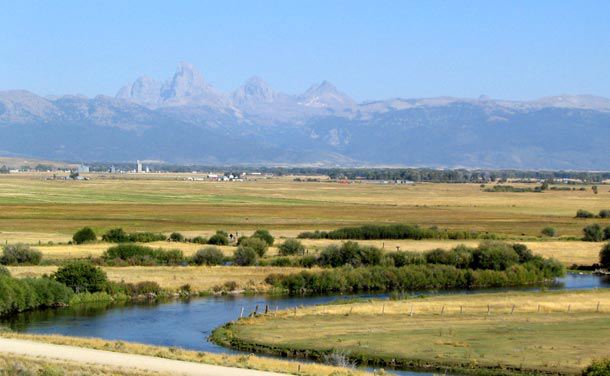To go Back at any time,
use Browser's "Previous Page"
After a late start (making more hotel reservations), we stopped to get educated on growing potatoes in Idaho. In the Potato Expo Museum in Blackfoot, ID, we learned a number of useful facts --- for example, the origin of the potato’s nickname, SPUD. When the Spaniards brought the potato back to Europe from the Americas, it had a hard time being accepted. In fact, it was considered to be poisonous or evil in England by the Society for the Prevention of Unwholesome Diets, or S.P.U.D. The rest is history.
Of course, the reason spuds can be grown in Idaho at all is water. Without it, southern Idaho would still be a desert. The main source of that precious commodity is the Snake River, which stretches more than 1000 miles from its origin in Yellowstone National Park to its end at the Columbia River in Washington. That’s why we encountered it as far north as Lewiston, ID, and glimpsed it again and again as we drove from Boise eastward across the state. Incredibly long sprinklers like the one below in this potato field are the common means now used to irrigate.

The potato harvest usually begins in late September with much of the crop being stored for up to a year in climate-controlled “cellars”. In the photo below, we believe the structure in the foreground is a modern cellar and behind it is an old-style cellar with sod roof. We saw many of both types.

One scenic stop that we made time for along the way was Idaho Falls. Here, the Snake River tumbles picturesquely first over a weir and then over natural rocks.

We also paused to visit the Teton Flood Museum in Rexburg, ID. That museum documents the collapse of the earthen Teton Dam above Rexburg in 1976, just months after it was complete.
Approaching Driggs, ID, we had our first glimpse of the Tetons’ western face. In the foreground is the Teton River, the same river once impounded behind the Teton Dam.

Driggs, ID, is not a large town but it will be our home for two nights as we do our darndest to avoid Labor Day weekend crowds in Jackson, WY. That town is about a one hour’s drive from here, making a tour of Grand Teton National Park doable from Driggs as a day trip.